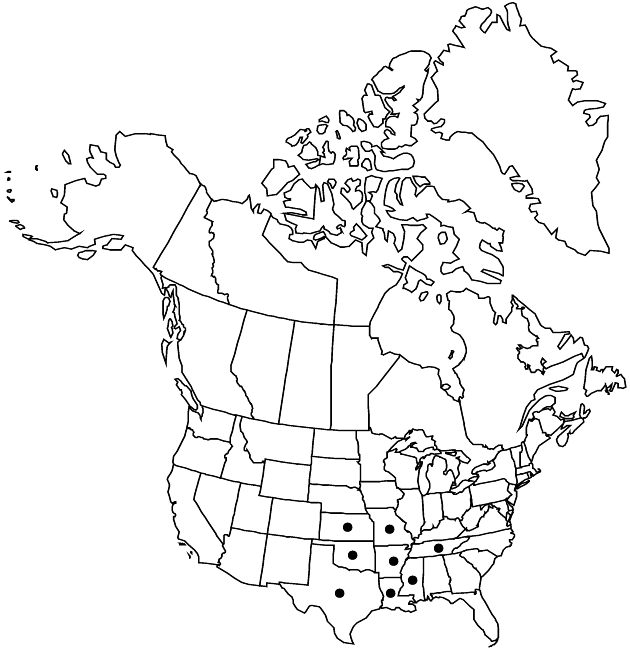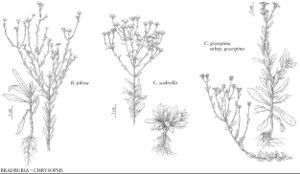Bradburia pilosa
Rev. Heterotheca Phyllotheca, 7. 1996.
Annuals, 15–80 cm; taprooted. Stems erect, branched distally (rarely at base), sparsely to densely pilose. Leaves: basal oblanceolate, 50–100 × 10–25 mm, margins entire to apically dentate, pilose, apices acute, faces pilose; cauline linear-elliptic, reduced distally to 10 mm or less, margins obscurely dentate or entire. Heads 1–30(–70). Peduncles 1.5–7 cm, short-pilose, sometimes stipitate-glandular distally; bracts foliaceous, grading to linear scales. Phyllaries in 3–4 series, linear, unequal, margins scarious, faces sparsely to densely short- to long-pilose, sparsely glandular. Ray florets (11–)16(–24); laminae 7–12 × 1–2 mm. Disc florets 25–60, bisexual, fertile; corollas 4.5–6 mm, lobes 0.5 mm. Cypselae stramineous to brown, obconic-obovoid, compressed (narrowly elliptic in cross section), smooth or slightly ribbed, faces short-strigose; pappi in 2(–3) series, outer of light tan, flat scales 0.5–1.1 mm, inner 1(–2) of yellow to rust proximally, whitish to tan distally, linear, barbellate bristles 5–6 mm. 2n = 8.
Phenology: Flowering late spring–early summer.
Habitat: Sandy and rocky soils, dry prairies, fields, glades, roadsides
Elevation: 10–400 m
Distribution

Ark., Kans., La., Miss., Mo., Okla., Tenn., Tex.
Discussion
Bradburia pilosa grows in the western coastal plain province, southwestern central lowlands province, lower elevations of the Ozark Plateau province, and has possibly been introduced at a few locations in the interior low plateau province. It has possibly been introduced at a few sites in Kentucky, North Carolina, Virginia, and in Leon County, Florida.
Selected References
None.
